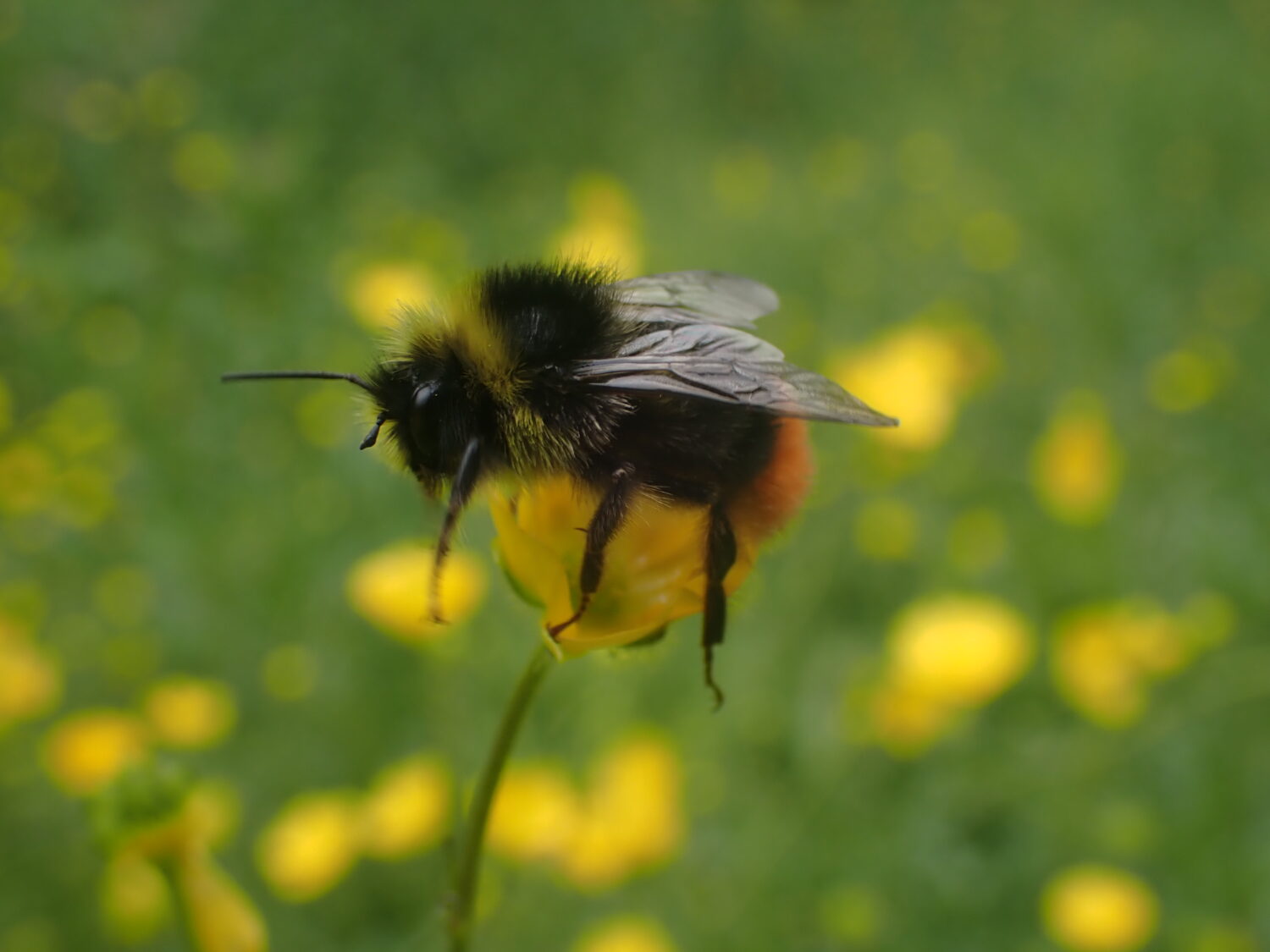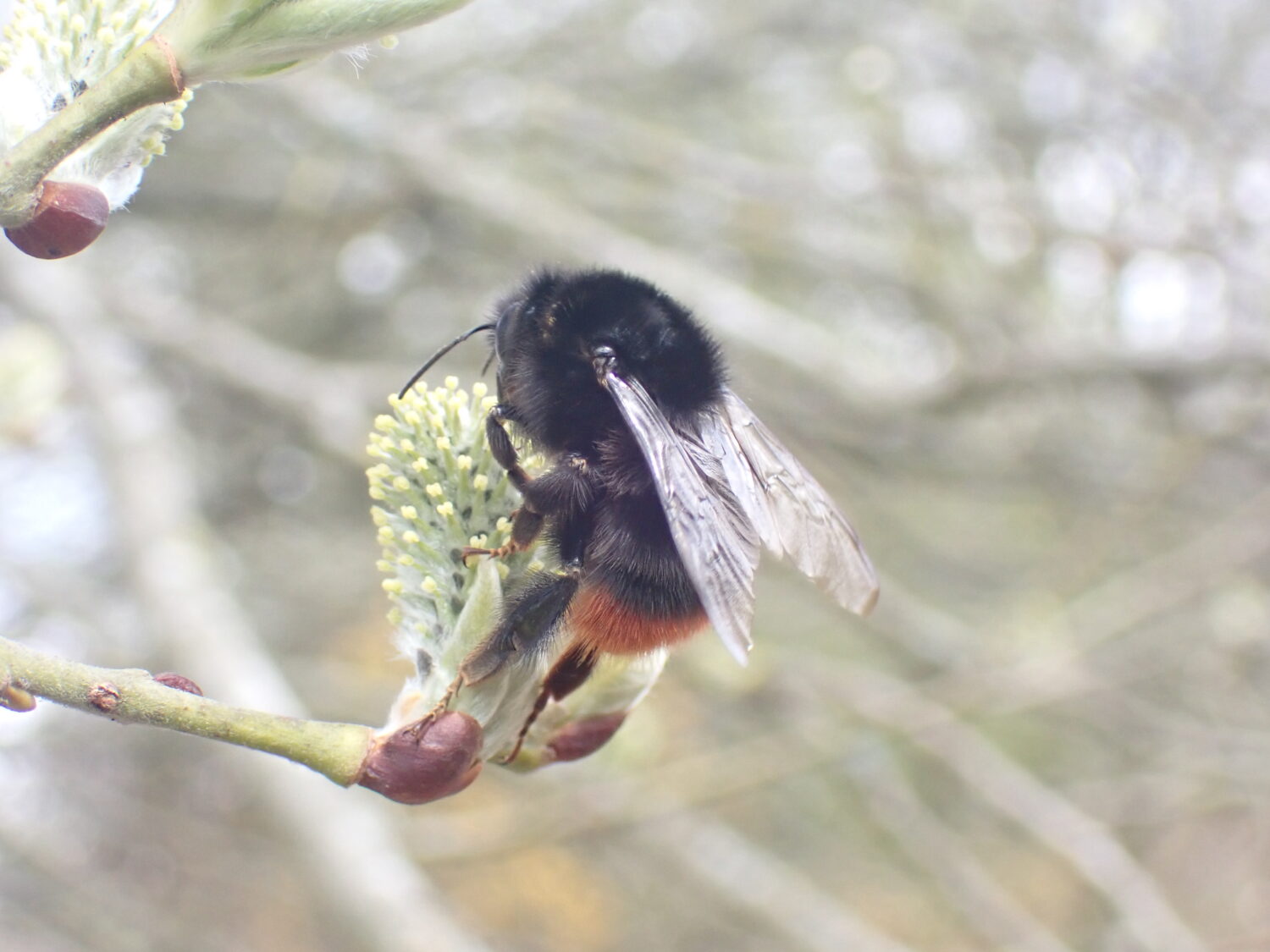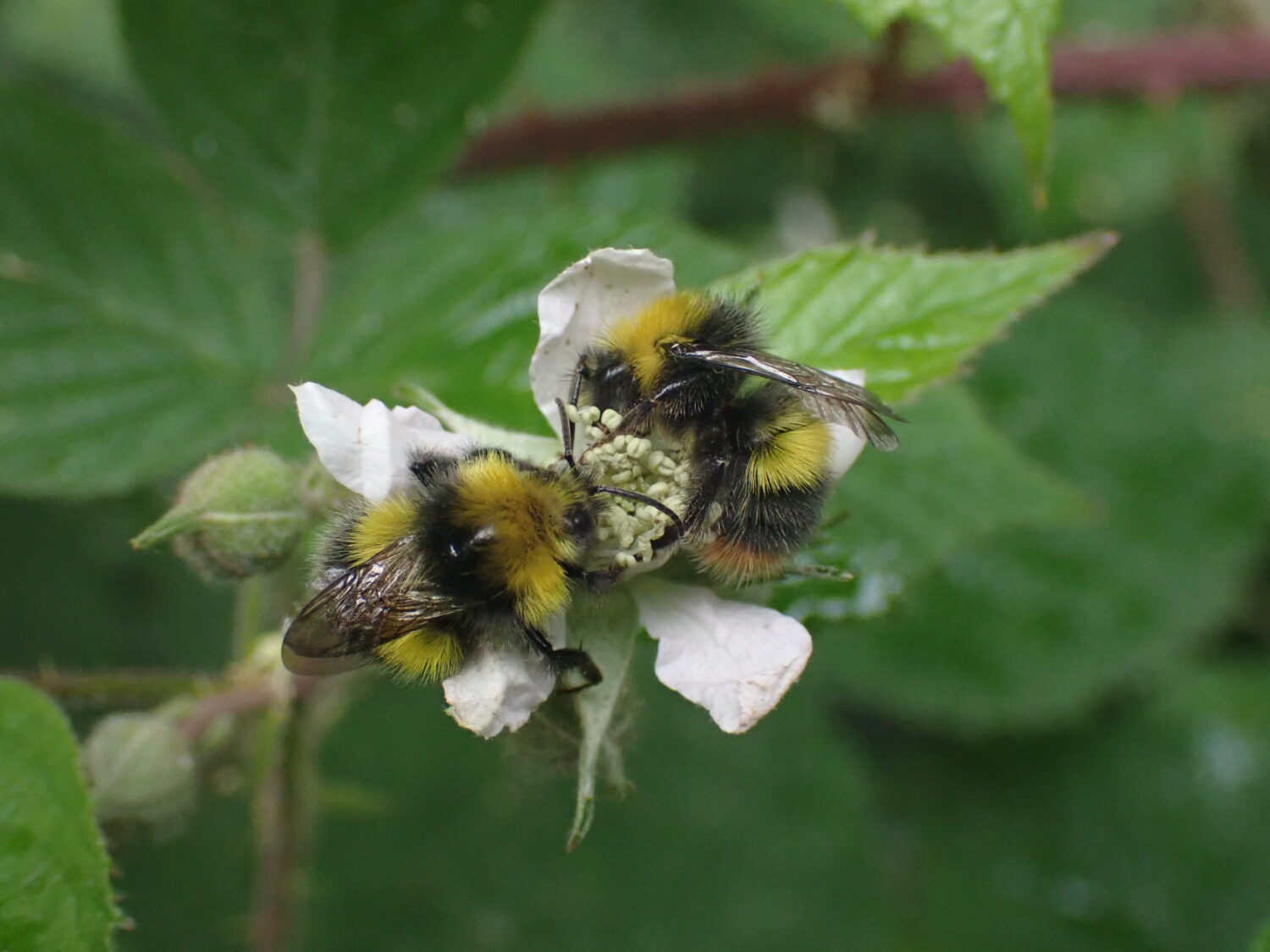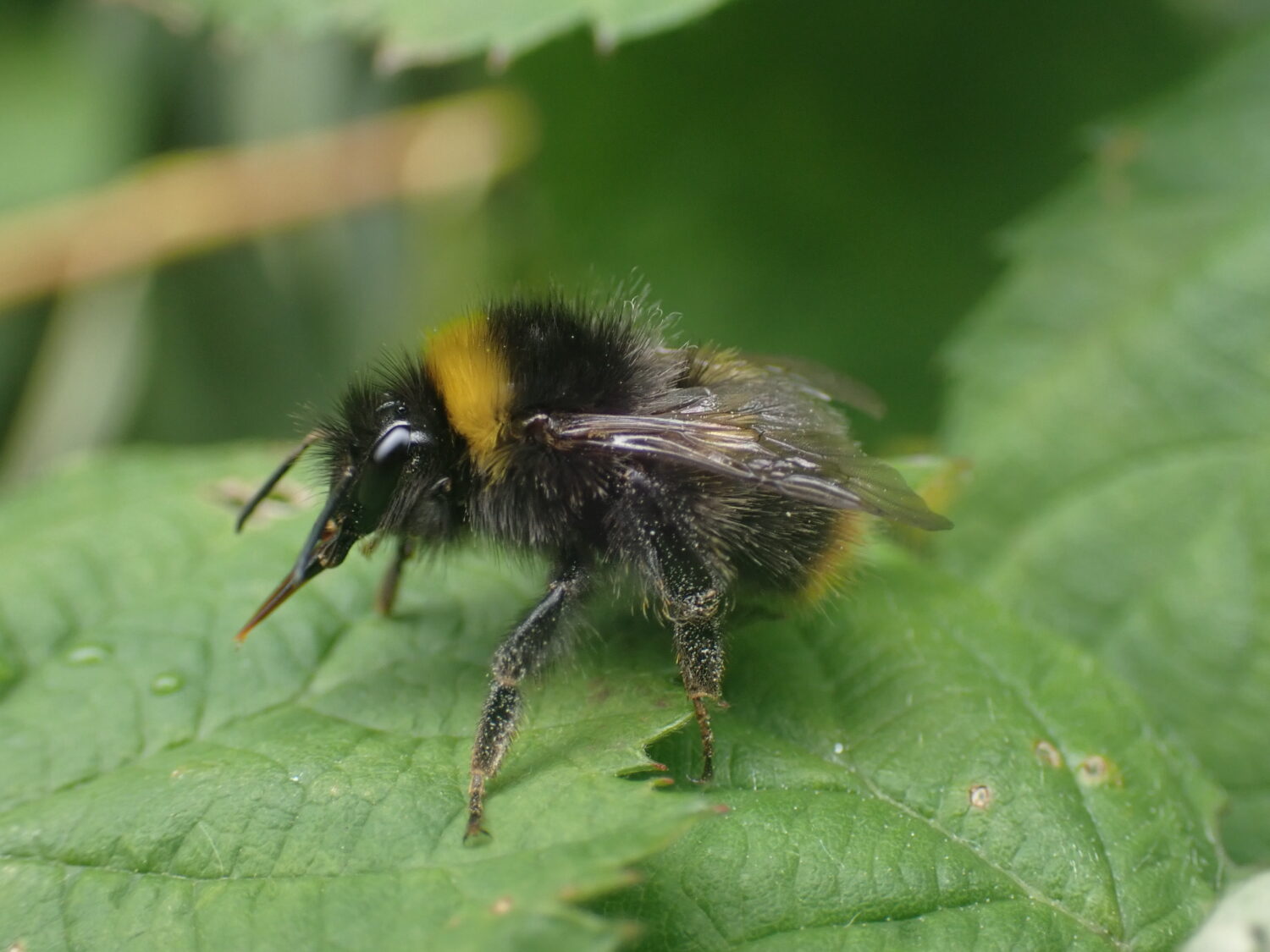Explore the common and familiar bumblebees of North East England in a new blog by NHSN Invertebrate Group Coordinator, Charlotte Rankin
Nineteen bumblebee species call the North East home, but which species are you most likely to encounter? Found in urban settings, gardens and parks, eight of these bumblebees are considered widespread and common, and so are great group of bumblebees to get familiar with. Here’s a short guide to the North East’s common bumblebees.
Bumblebee ID top tips
Bumblebees have three body sections: the head, thorax (section behind the head and abdomen) and abdomen. The colour of hairs on these body sections helps with identification. Here are four handy features to look out for:
First, look at the tail colour. This narrows down your bumblebee into one of three groups: white-tailed, red/orange-tailed, and ginger-tailed.
Banding. Does your bumblebee have any yellow bands? If so, how many and where?
Hind legs. Looking at the hind legs helps you decide if you are seeing a female or male, or a cuckoo bumblebee. Only females (queens and workers) collect pollen and have a shiny pollen basket on their hind legs used to store pollen (on a part of the leg known as the tibia). Males have hairy back legs, and those of cuckoo bumblebees are even hairier!
Face. Males of four common species have yellow facial hair, or ‘moustaches’! Males have longer, more curved antennae. One bumblebee, the Garden Bumblebee, has a distinctive elongated face which is a key feature of this species.
Time of year. Queens are the first bumblebees you’ll see in the year, emerging from hibernation in late winter and spring. Workers build in number over spring and summer, and late summer sees an increase in male bumblebees as many nests are coming to their natural end.
Red-tailed Bumblebee (Bombus lapidarius)
Queen: Queens are large have velvet-like black fur with a fire-engine red tail. Unlike males of this species, queens and workers do not have any yellow bands.
Worker: Workers resemble small versions of queens. The tail may fade to a more orange-red due to the sun.
Male: Males have yellow banding, forming a collar behind the head and a band along the bottom of the thorax. Colours can appear faded due to the sun.
Nesting habit: Large nests for a bumblebee, this species typically nests underground with a few hundred workers.
Did you know? ‘Lapidarius’ meaning of or related to stone, this bumblebee was observed to favour nesting amongst stone or rubble,
Early Bumblebee (Bombus pratorum)
The smallest UK bumblebee!
Queen: Queens have a small orange-red tail and two lemon-yellow bands, forming a collar behind the head and across the abdomen.
Worker: Workers resemble small queens, but often have the abdomen band missing or reduced.
Male: Males are more extensively yellow and have yellow facial hair (or a ‘moustache’!).
Nesting habit: Typically underground in old mammal burrows, but sometimes aerially in roof spaces and tree holes.
Did you know? Nests finish early in the year and males can be seen in as early as late April and May.
Common Carder Bee (Bombus pascuorum)
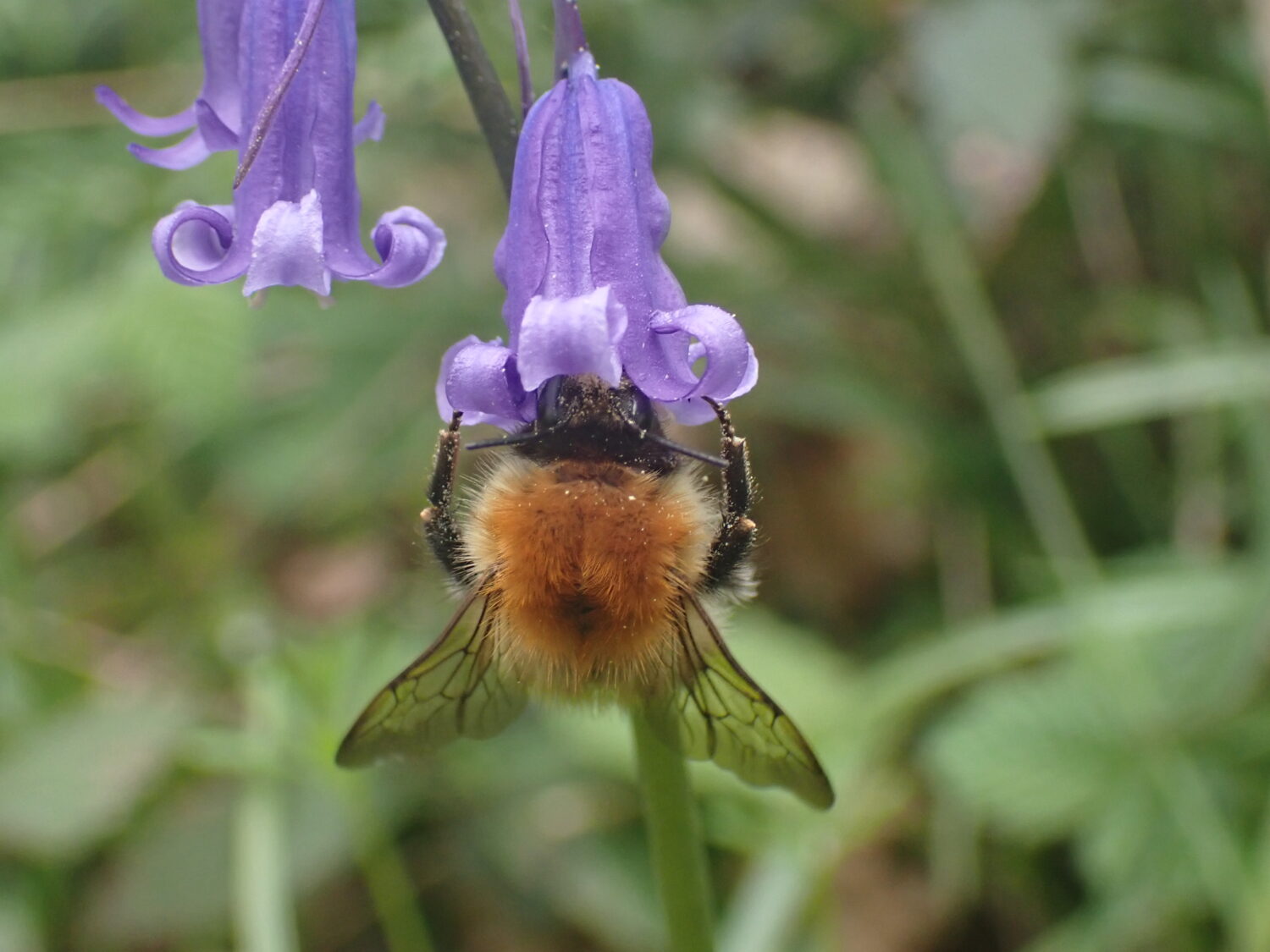
Common Carder Bee © Charlotte Rankin 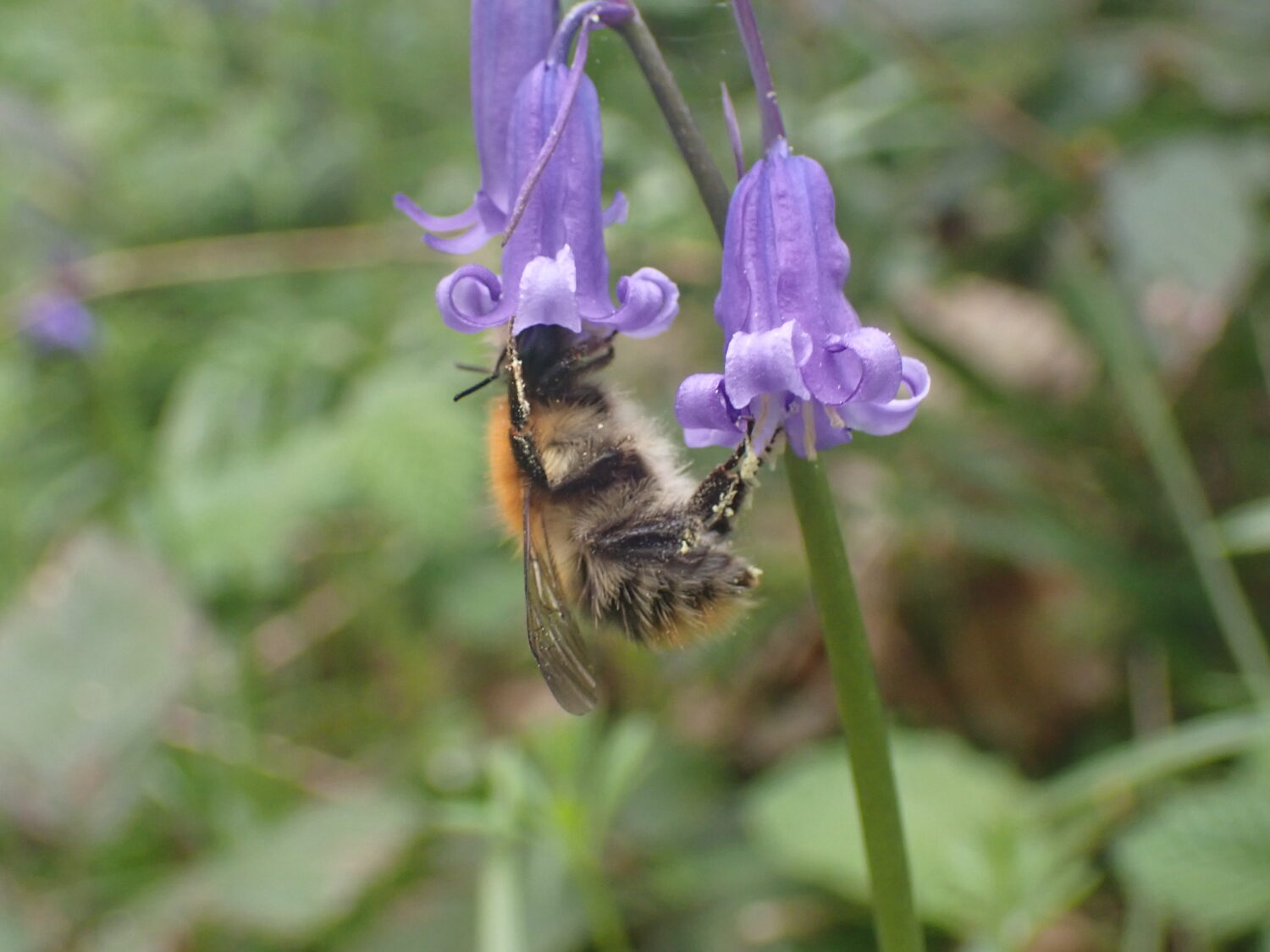
Common Carder Bee © Charlotte Rankin
Queen: An overall gingery bumblebee with variable amounts of black hair on the abdomen.
Worker: Workers resemble smaller versions of queens.
Male: Resemble queens and workers, but look out for the absence of pollen baskets and the longer antennae.
Nesting habit: Nests at the base of grassy tussocks, using dried moss and grass as nest material.
Did you know? A long-tongued bumblebee, this bumblebee prefers flowers with tubular flowers, such as vetches, clovers and foxglove.
Buff-tailed Bumblebee (Bombus terrestris)
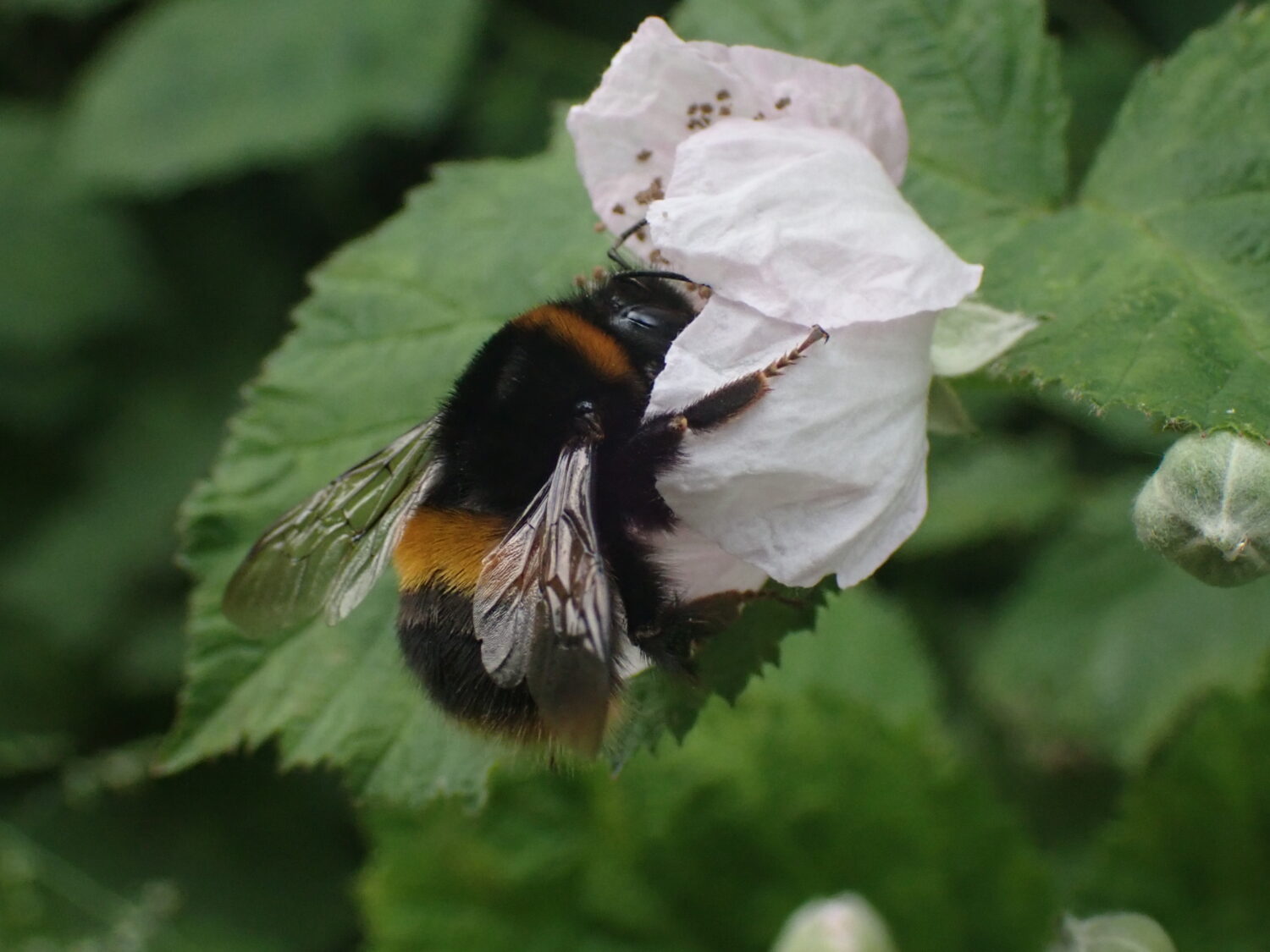
Buff-tailed Bumblebee (queen) © Charlotte Rankin 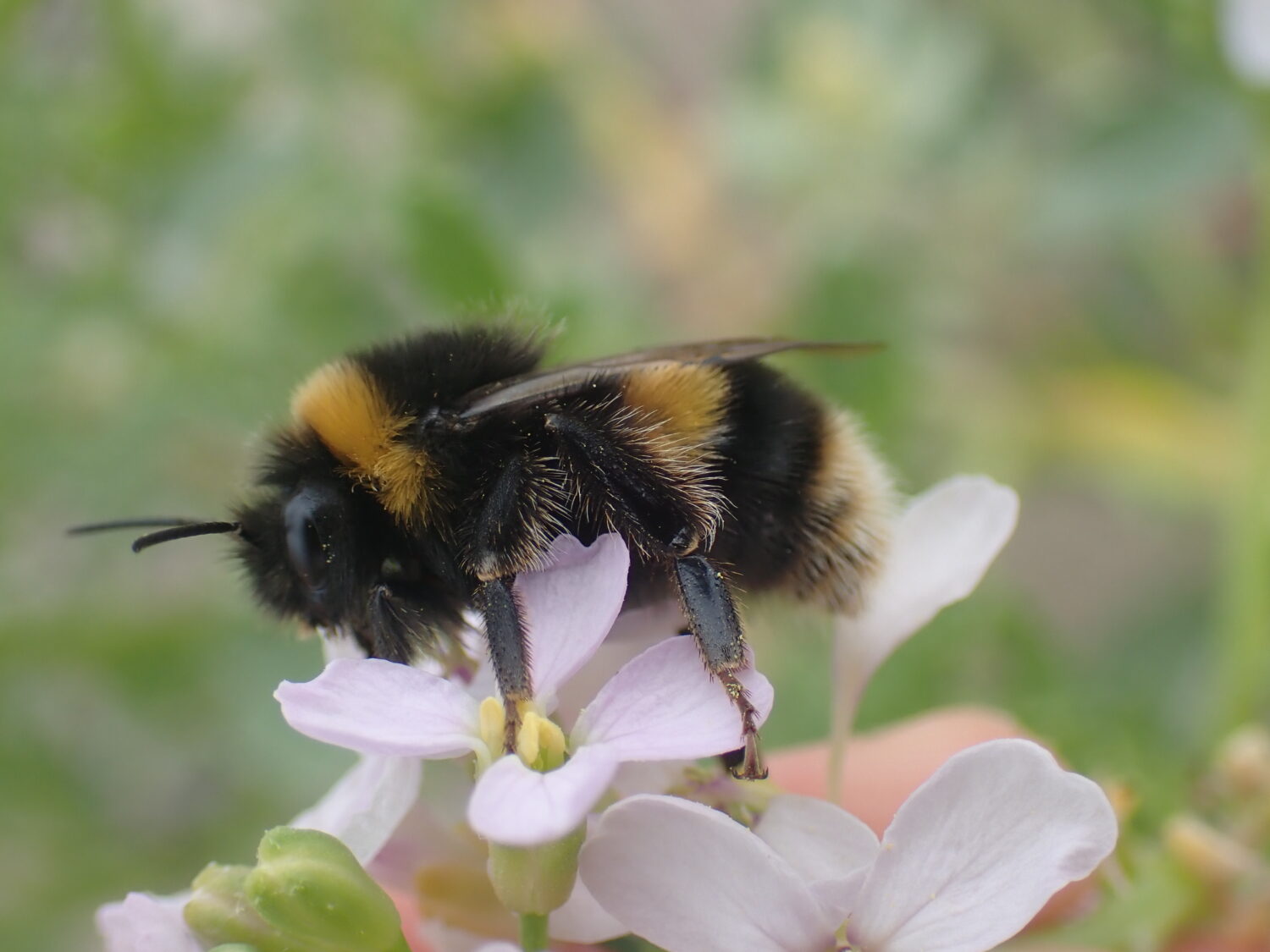
Buff-tailed Bumblebee (male) © Charlotte Rankin
One of the first bumblebees to emerge in late winter and spring.
Queen: Large bumblebees with an off-white to tawny tail, and two dull-yellow bands, forming a collar behind the head and across the abdomen.
Worker: Smaller versions of the queen but often with a whiter tail, making them difficult to separate from workers of the White-tailed Bumblebee. There is often a fringe of buff hairs along the top of the white tail.
Males: Males have an off-white tail and two yellow hands.
Nesting habit: Typically underground nesters.
Did you know? This bumblebee was first recorded in the North East in 1827. It is increasingly recorded to be winter-active in urban areas, relying on winter garden plants such as Mahonia.
White-tailed Bumblebee (Bombus lucorum group)
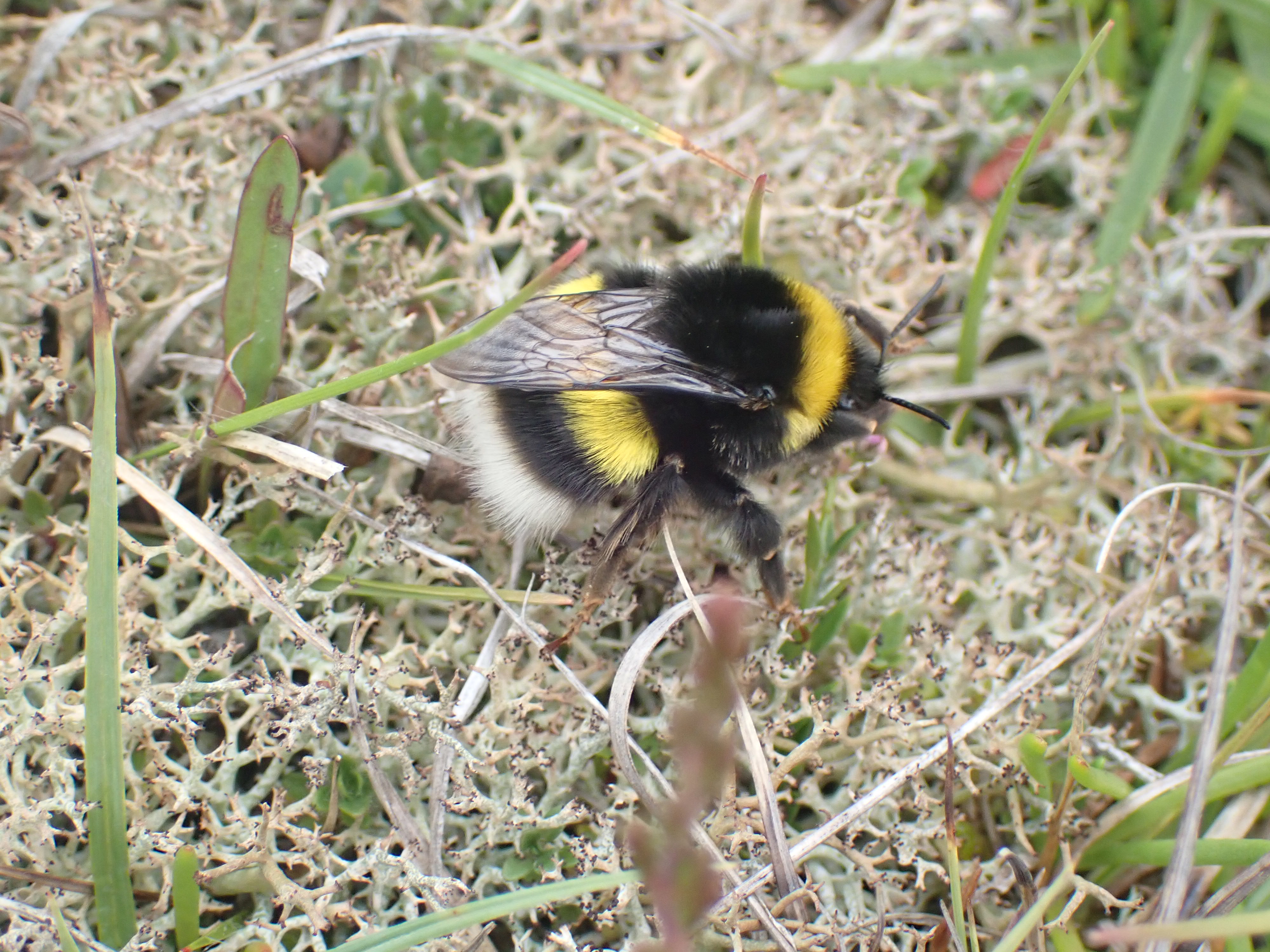
White-tailed Bumblebee (queen) © Charlotte Rankin 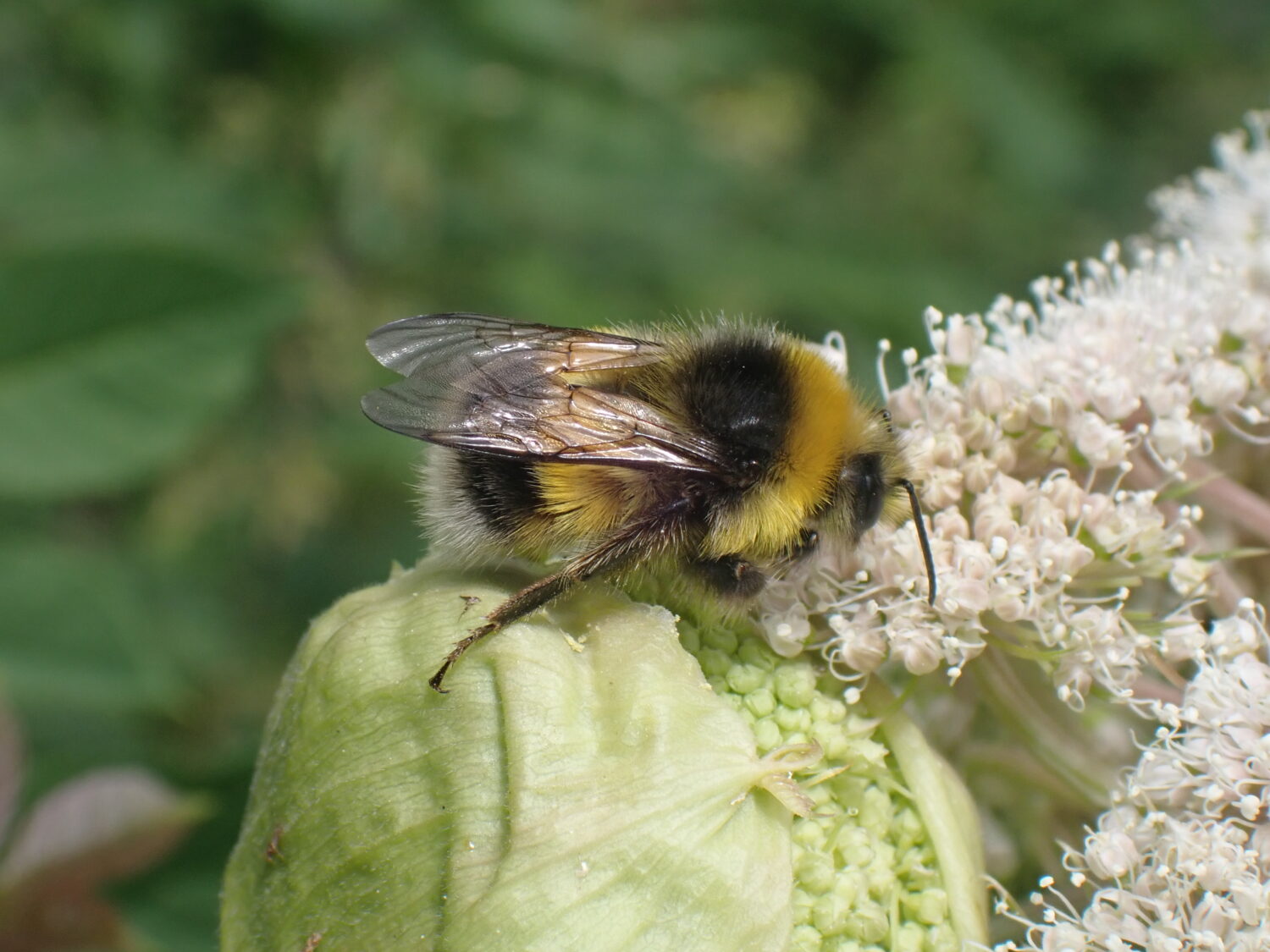
White-tailed Bumblebee (male) © Charlotte Rankin
Queen: Clean white tails with two bright-yellow bands, forming a collar behind the head and across the abdomen.
Workers: Small versions of the queen and look very similar to works of the Buff-tailed Bumblebee. Workers of these two species can be recorded as an aggregate.
Males: Often extensively yellow and have yellow facial hair.
Nesting habit: Typically underground nesters.
Did you know? The White-tailed Bumblebee is a group of three different species that can only currently be separated by DNA! But don’t worry, you can still record your sightings as the White-tailed Bumblebee group.
Garden Bumblebee (Bombus hortorum)
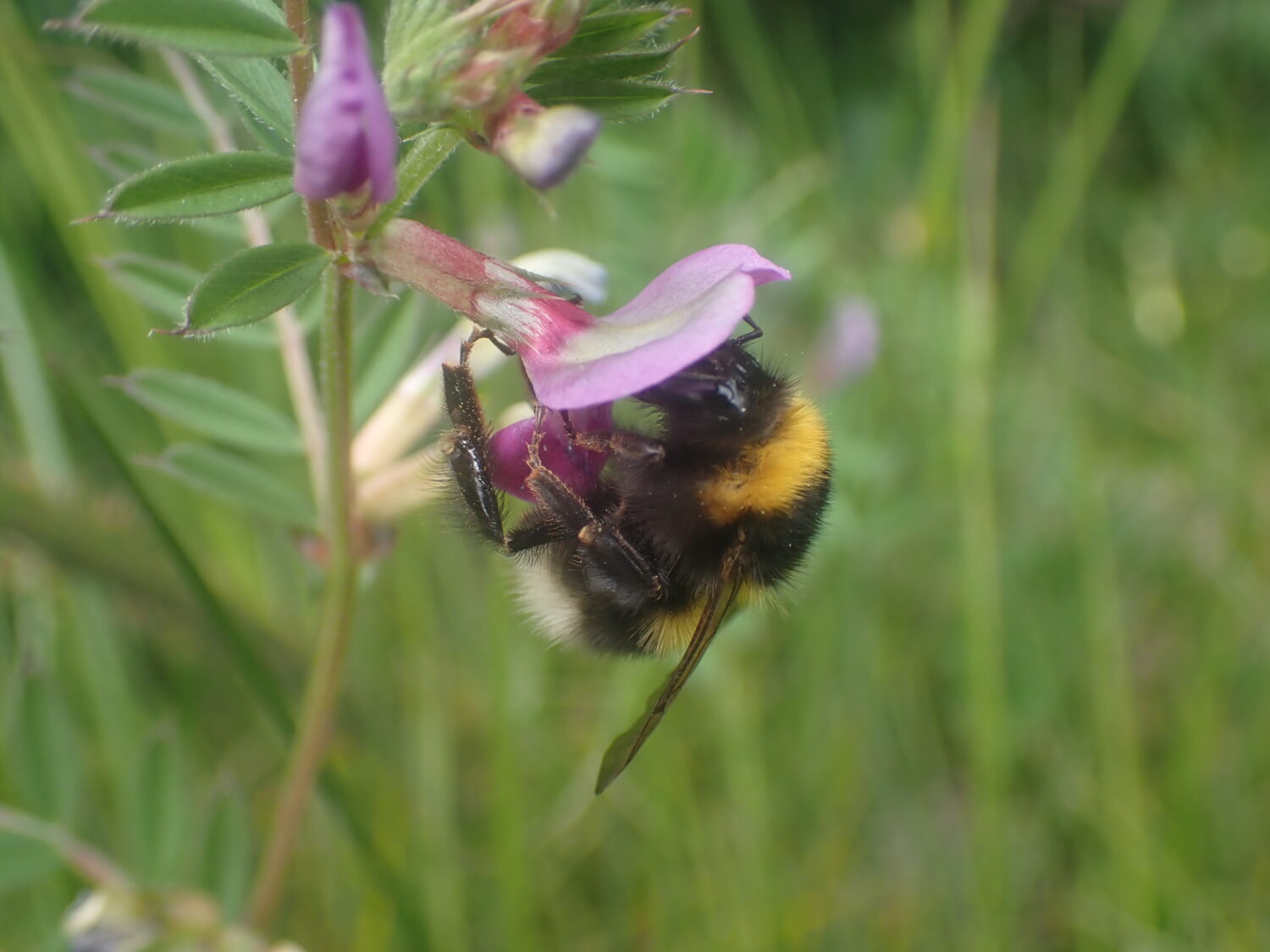
Garden Bumblebee (worker) © Charlotte Rankin 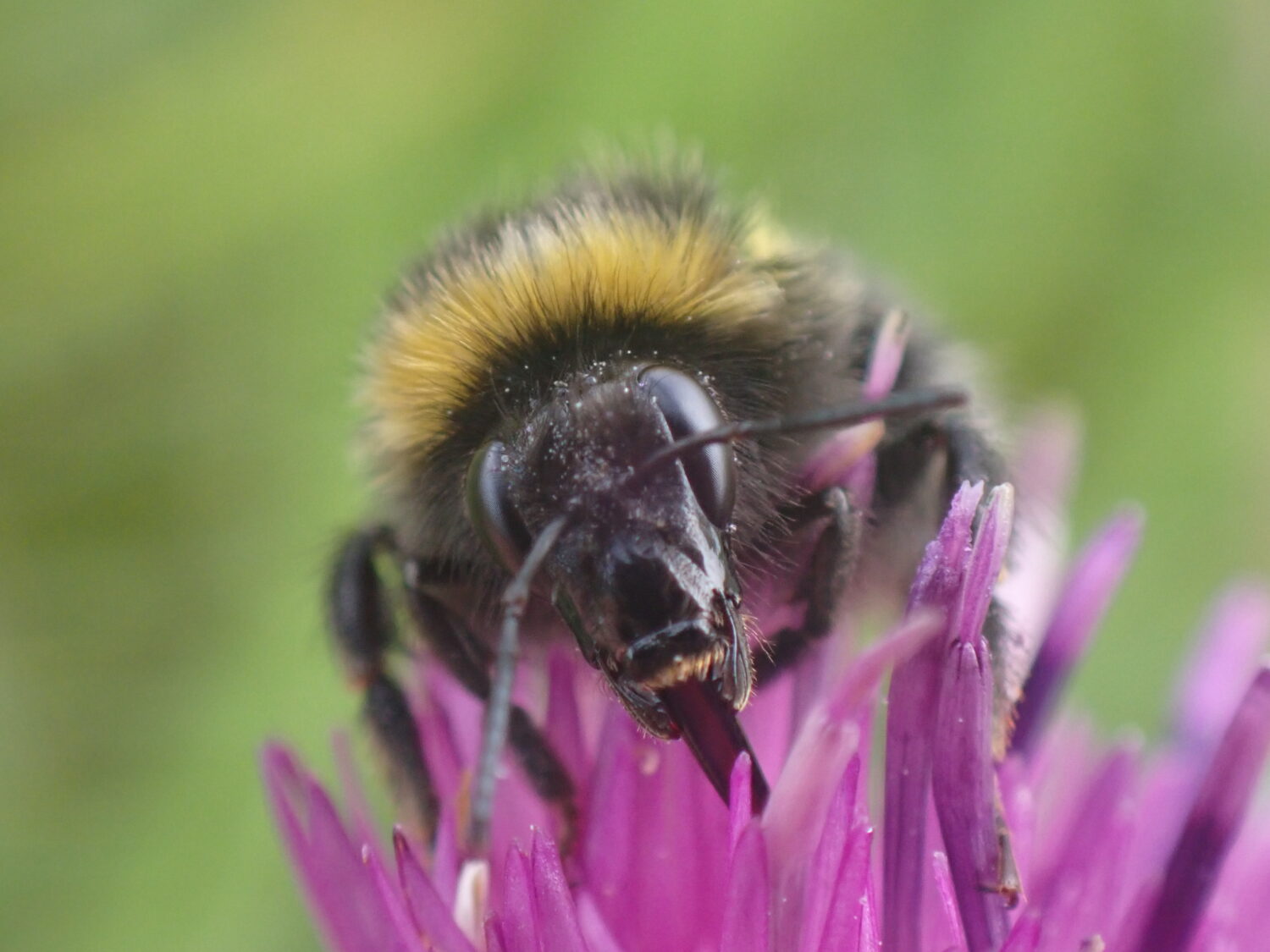
Garden Bumblebee (long face) © Charlotte Rankin
Look out for the elongated, ‘horse-like’ face of this bumblebee.
Queen: White-tailed bumblebee with three, rather than two, yellow bands: behind the head, across the bottom of the thorax and top of the abdomen. The thorax and abdomen band merge to form a midriff band.
Worker: Resemble smaller versions of queens.
Male: Resemble queens and workers, often with a yellow tuft of hair on the head. Look out for the longer antennae and absence of pollen baskets.
Nesting habit: Typically underground nesters.
Did you know? The longest tongue of any bumblebee, this species favours tubular flowers such as foxglove, vetches and clovers.
Heath Bumblebee (Bombus jonellus)
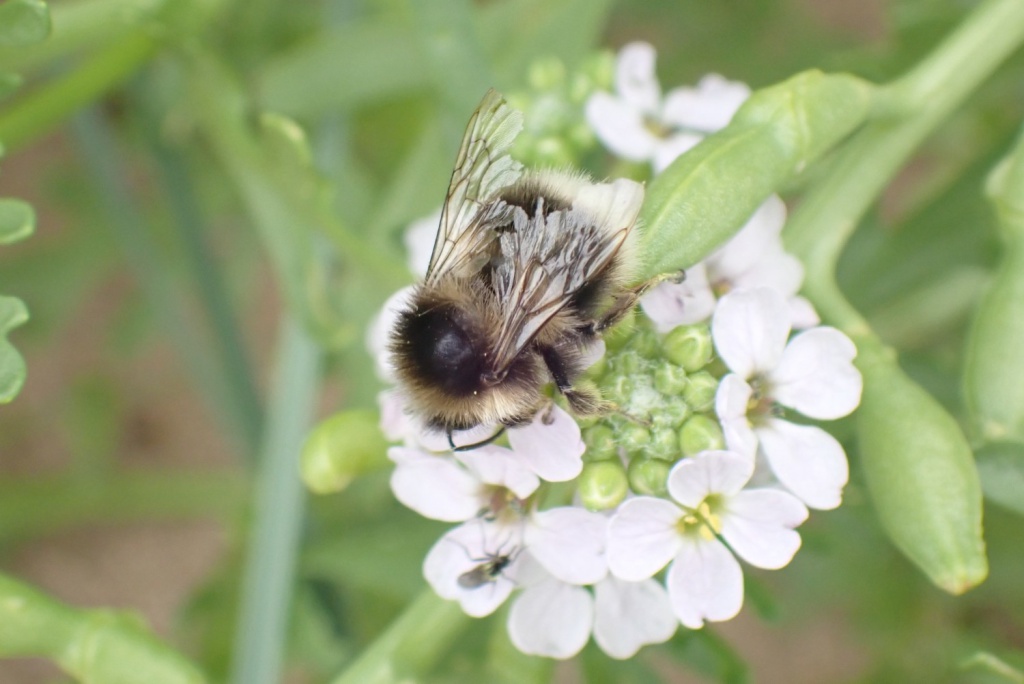
Heath Bumblebee (male) © James Common 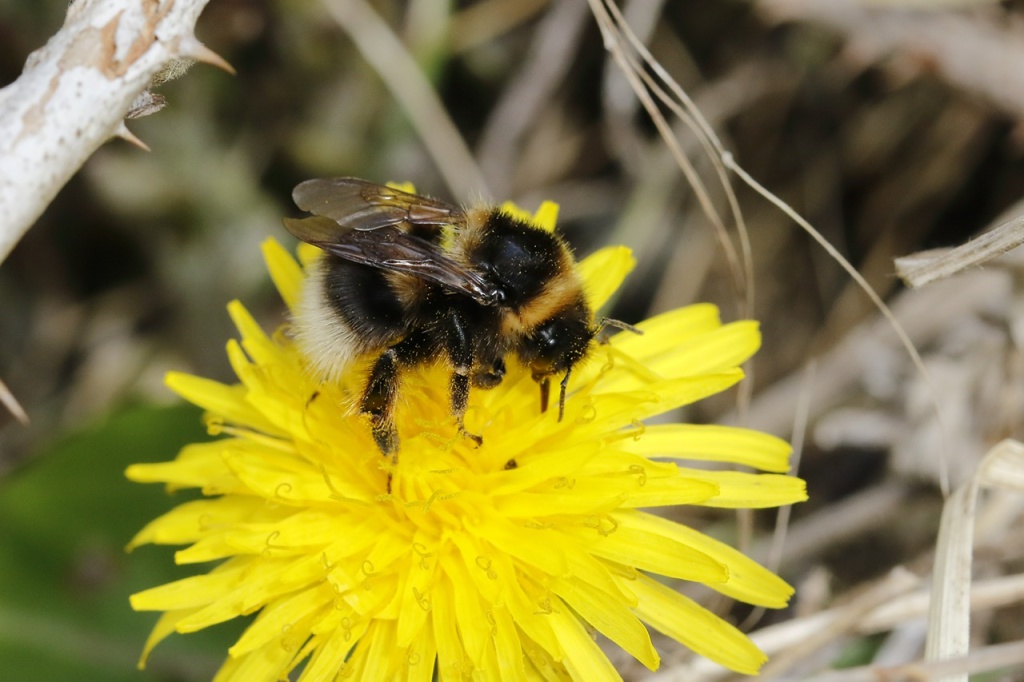
Heath Bumblebee (queen) © Chris Barlow
Similar to the Garden Bumblebee but smaller and with a short, round face.
Queen: White-tailed bumblebee with three yellow bands.
Worker: Resemble smaller versions of the queen.
Male: Resemble queens and workers but with more extensive yellow hair and yellow facial hair. Males of the Garden Bumblebee do not have yellow facial hair.
Nesting habit: Typically underground nesting in old rodent nests.
Did you know? Despite its name, the Heath Bumblebee is found in a range of habitats, including urban settings.
Tree Bumblebee (Bombus hypnorum)
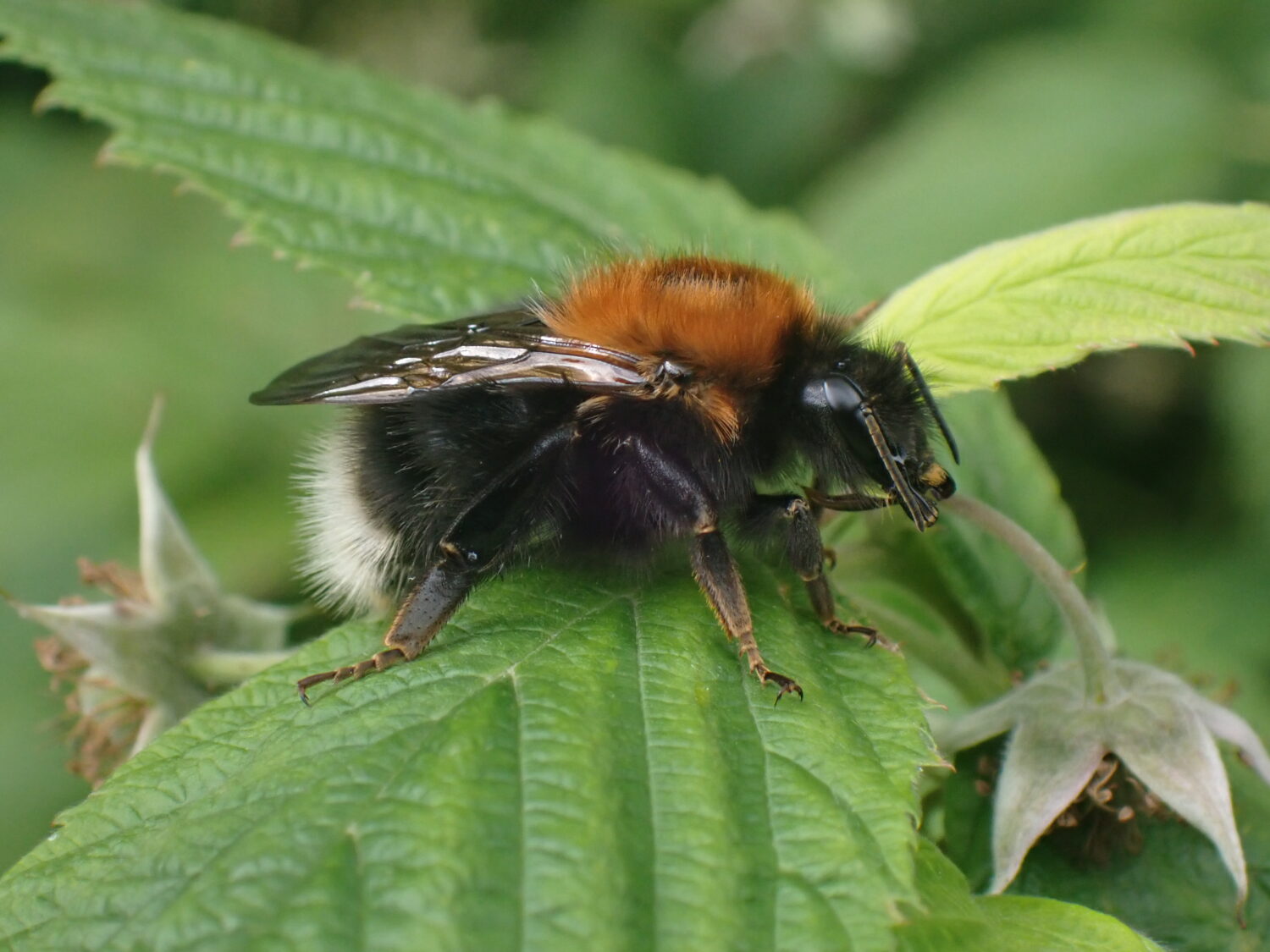
Tree Bumblebee (queen) © Charlotte Rankin 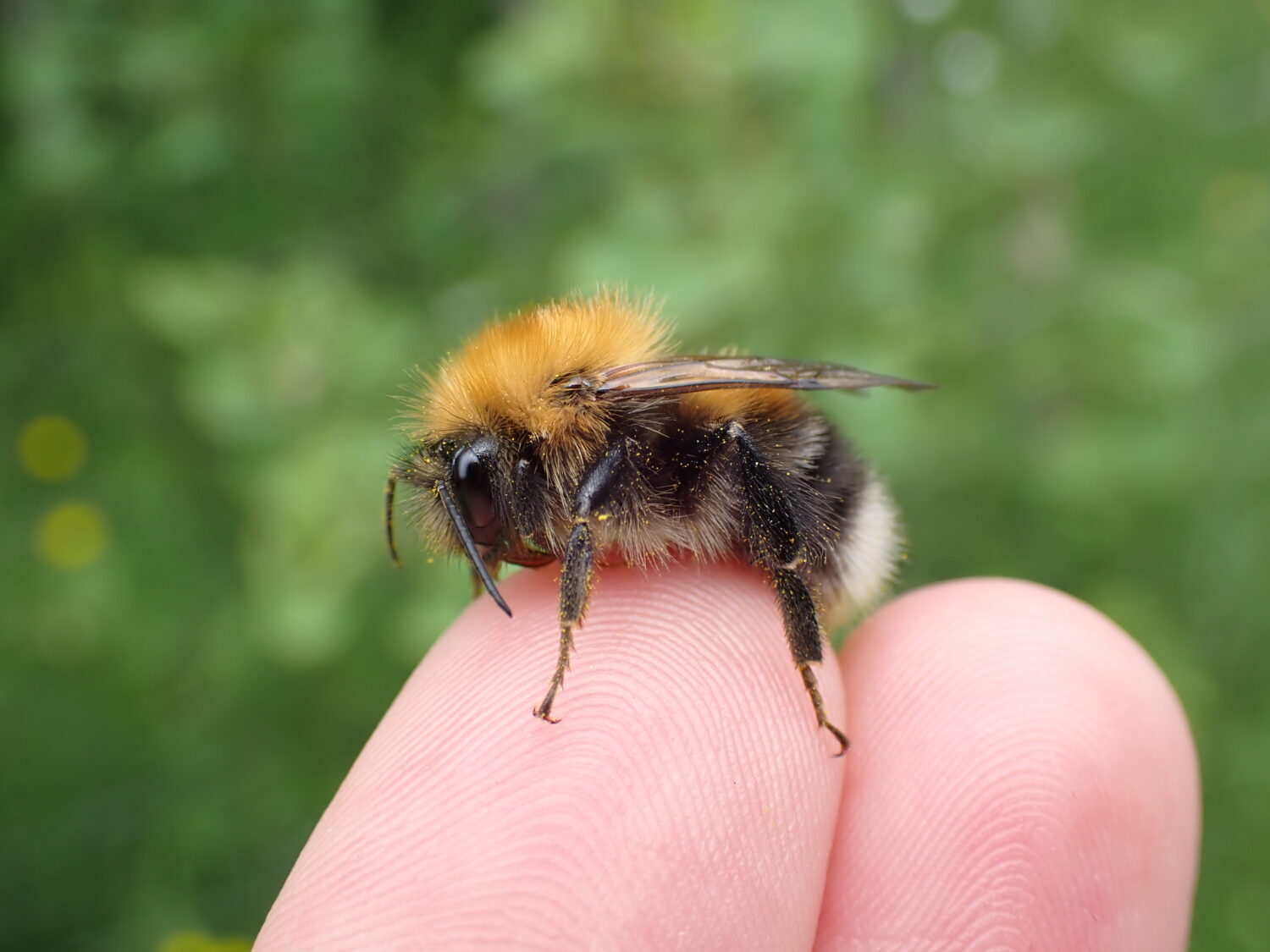
Tree Bumblebee (male) © Charlotte Rankin
Queen: ‘Neapolitan ice-cream’ bumblebee with three colours: brown thorax, black abdomen and white tail.
Worker: Workers resemble smaller versions of queens.
Male: Resemble queens and workers, often with a brown tuft of hair on top of the head. Look out for the longer antennae and absence of pollen baskets.
Nesting habit: An aerial-nesting bumblebee, naturally in tree holes, but commonly found nesting in roof eaves and old bird boxes.
Did you know? A relatively recent arrival, the Tree Bumblebee arrived from mainland Europe in 2001, and was first recorded in Northumberland in 2007.
